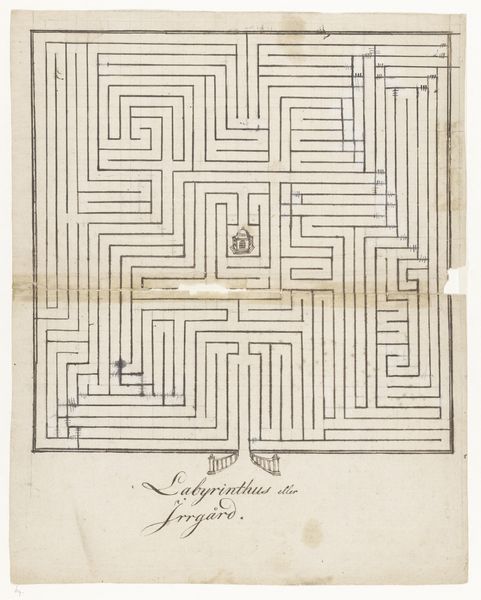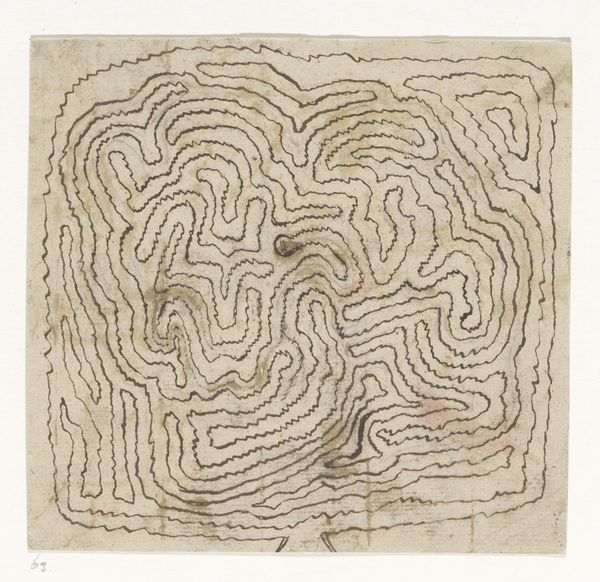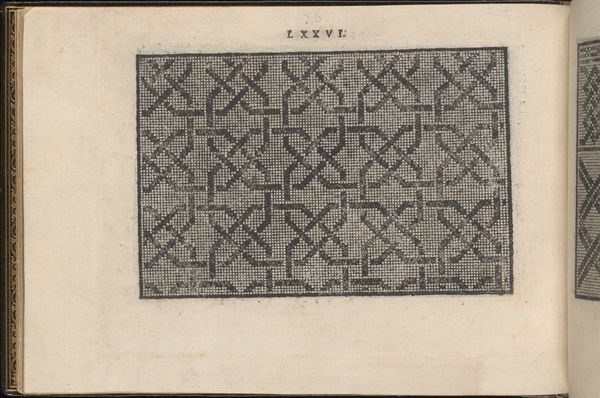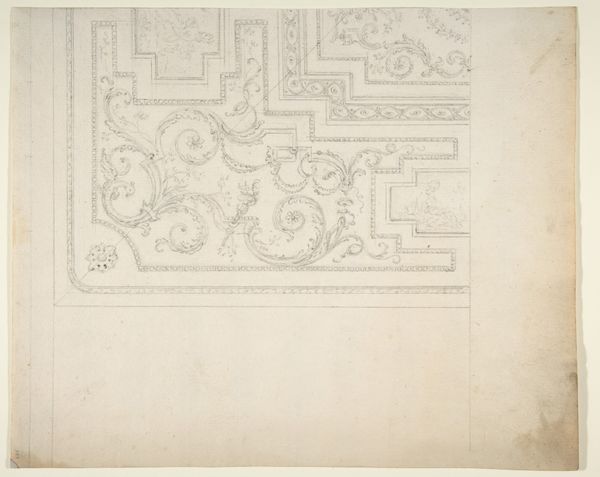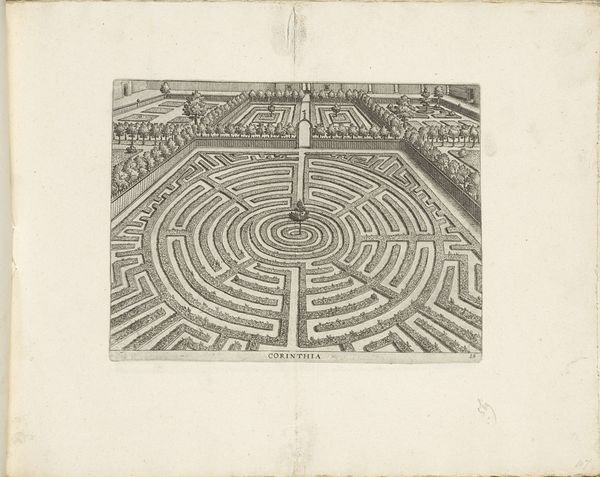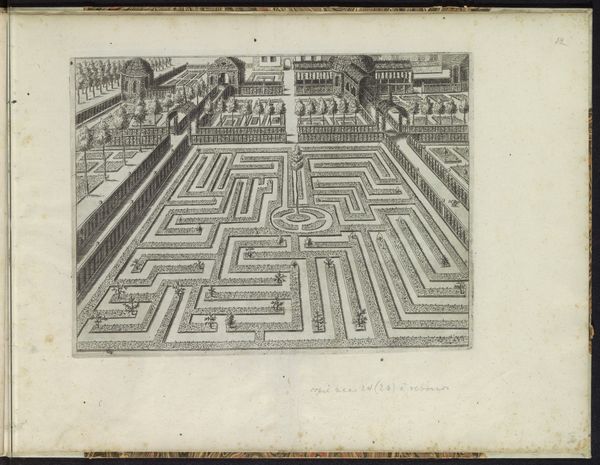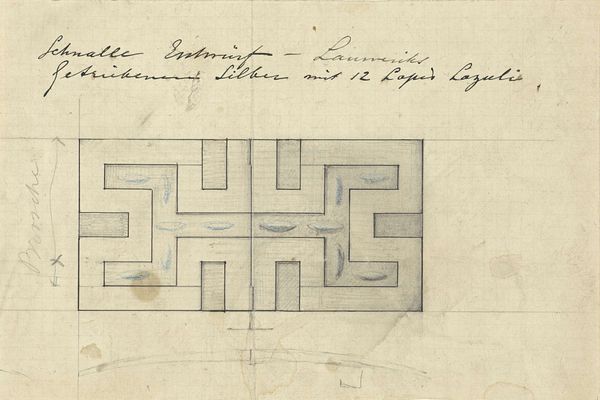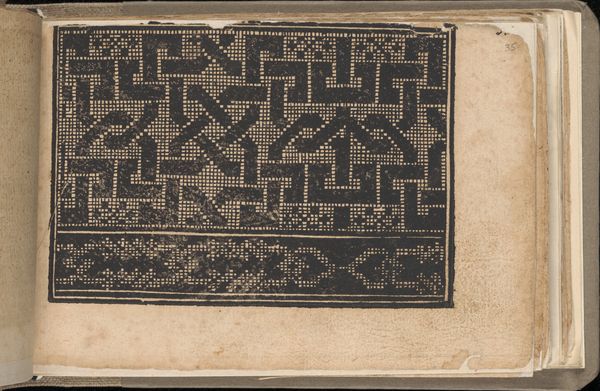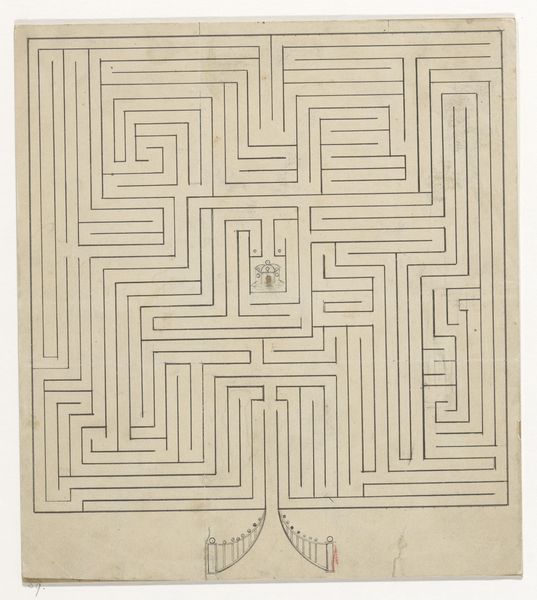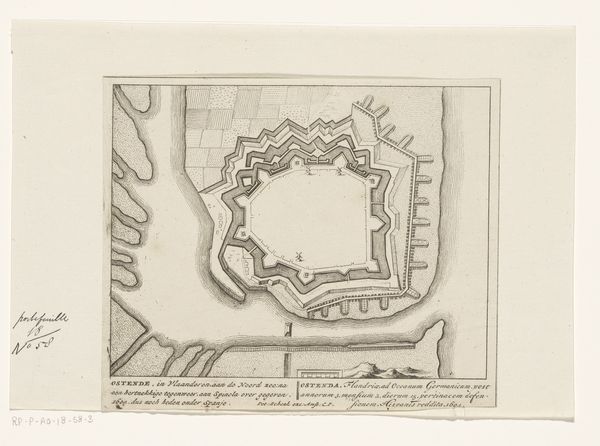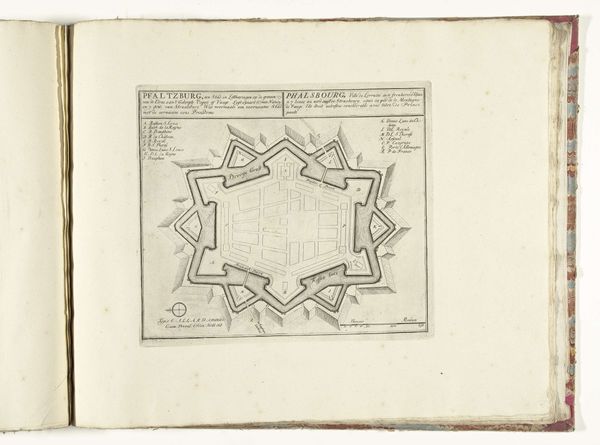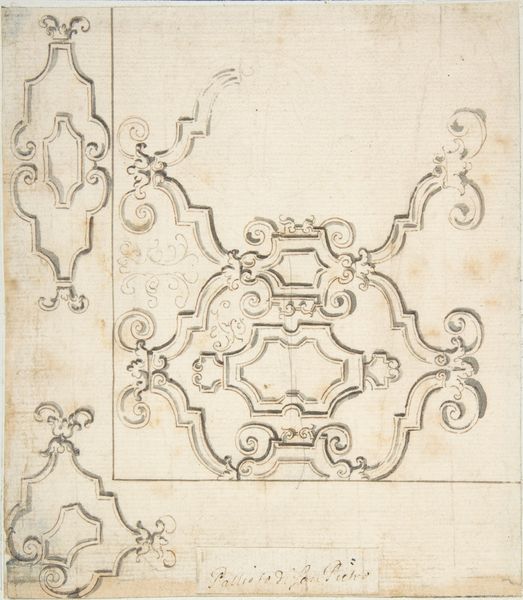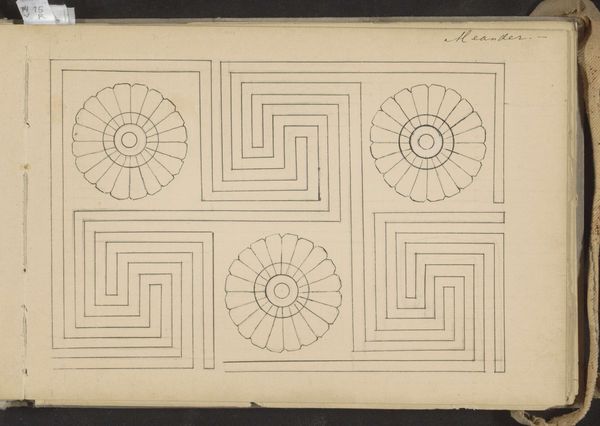
drawing, paper, watercolor, ink
#
drawing
#
landscape
#
paper
#
watercolor
#
ink
#
geometric
#
line
#
watercolor
Dimensions: height 166 mm, width 193 mm
Copyright: Rijks Museum: Open Domain
Curator: This is Jan Brandes's "Labyrint," created between 1770 and 1808, a work on paper using ink and watercolor. What springs to mind when you see this? Editor: Immediately, the word that comes to mind is "claustrophobia." The density of those winding lines is a bit unsettling, like being trapped inside someone’s obsessive thought pattern. Curator: Labyrinths often appear as metaphors in political discourse, particularly relating to states of imprisonment. It is fascinating that Brandes conceived of this in the late 18th century, a period of significant upheaval, from revolutionary movements to the ongoing legacies of colonial projects. Editor: Exactly, and it makes me think about power, control, even surveillance. I also notice these two tiny figures at the bottom. Are they meant to enter this maze, or perhaps they’re already trapped inside? The whole composition feels almost like an architectural plan, flattened and rendered slightly nightmarish with that blot of ink in the corner. Did Brandes maybe spill something and decide to just leave it? I love that it’s almost an accident! Curator: Perhaps not a mistake, but another element layered into Brandes’s concept of imprisonment—how one may mark or stain an environment. His meticulous linework almost creates an impossible spatial structure. It definitely highlights the precariousness of freedom and challenges perceptions of enlightenment ideals within spaces—whether physical or abstract. The figures at the base remind me a bit of theater set pieces. Editor: I get that entirely—especially with the "Labyrint" inscription in decorative calligraphy. Like some stage prop brought to life. Looking at the circular formation in the middle, I keep thinking there is a vital clue to its unlocking and wonder what that little central circle represents. What a riddle. Curator: Brandes, who served as a draughtsman for the Dutch East India Company, clearly encountered—and likely questioned—notions of constructed and enforced order. So perhaps that center isn't a clue, but another lock. It feels potent to view this through the lenses of historical and contemporary sociopolitical imprisonment—then and now. Editor: Absolutely, and now I just want to trace my finger along every winding line, mapping its potential solutions and dead ends. I feel more restless than I did a minute ago. Curator: I hope our visitors now might share the feeling as well. Thanks!
Comments
No comments
Be the first to comment and join the conversation on the ultimate creative platform.

